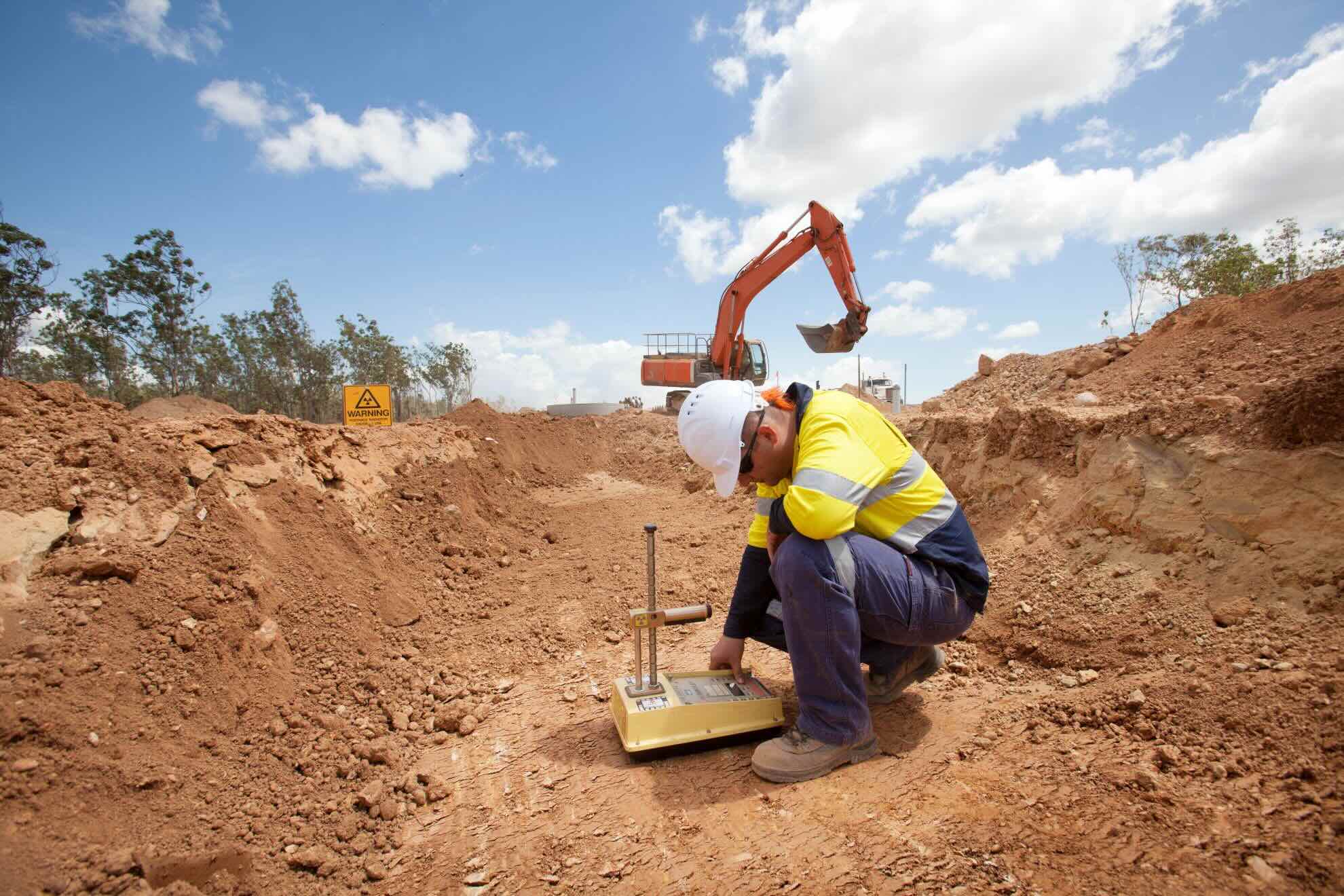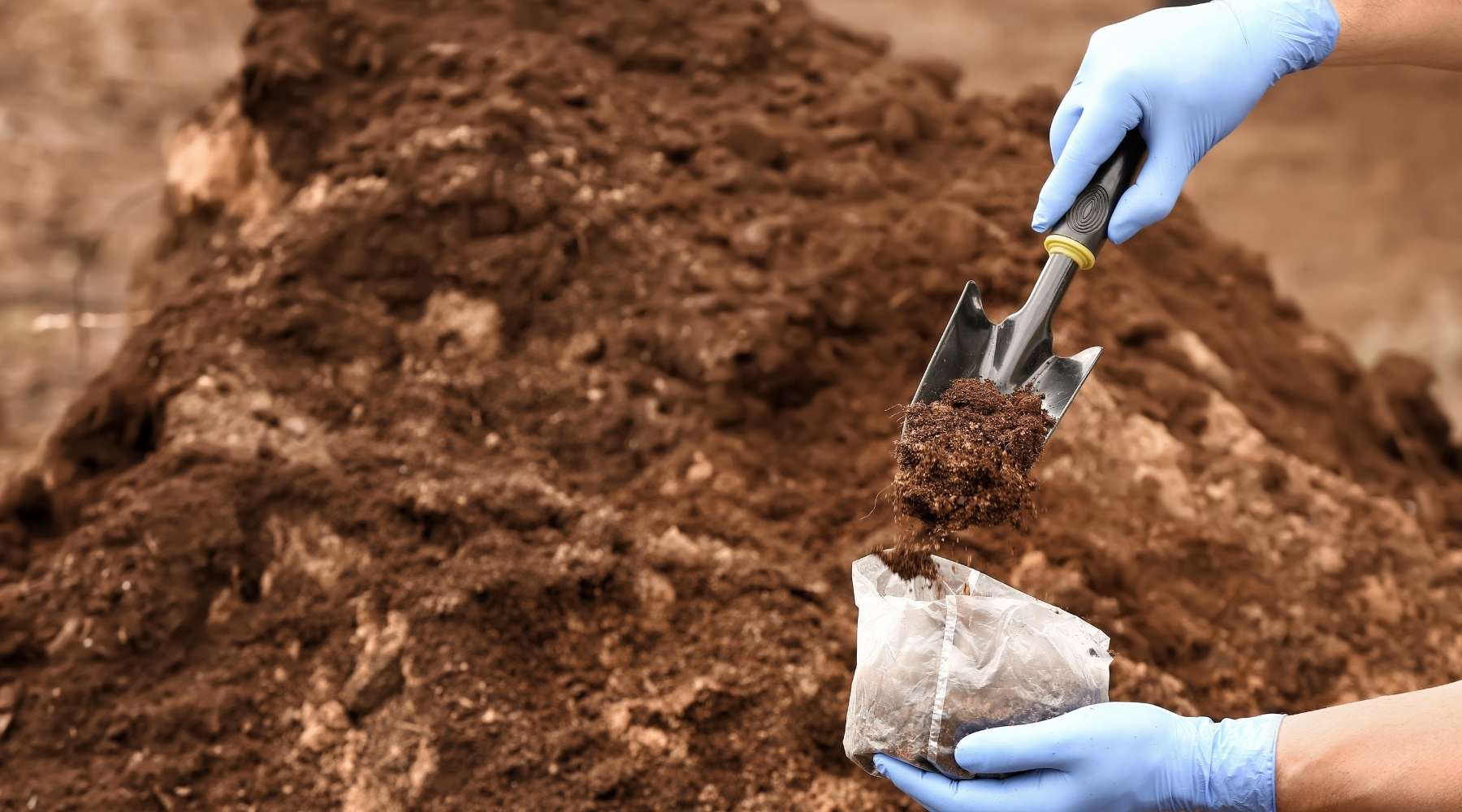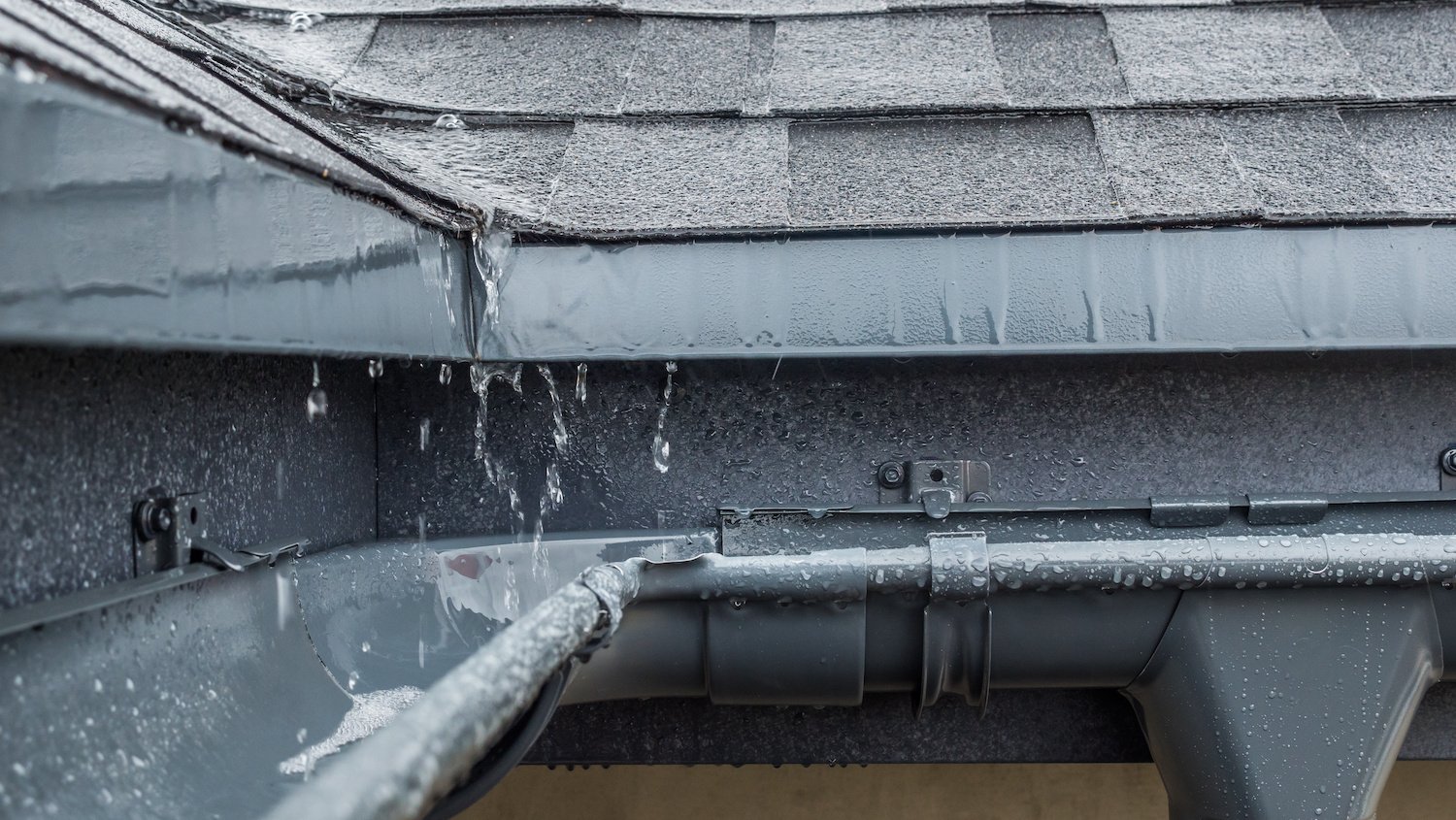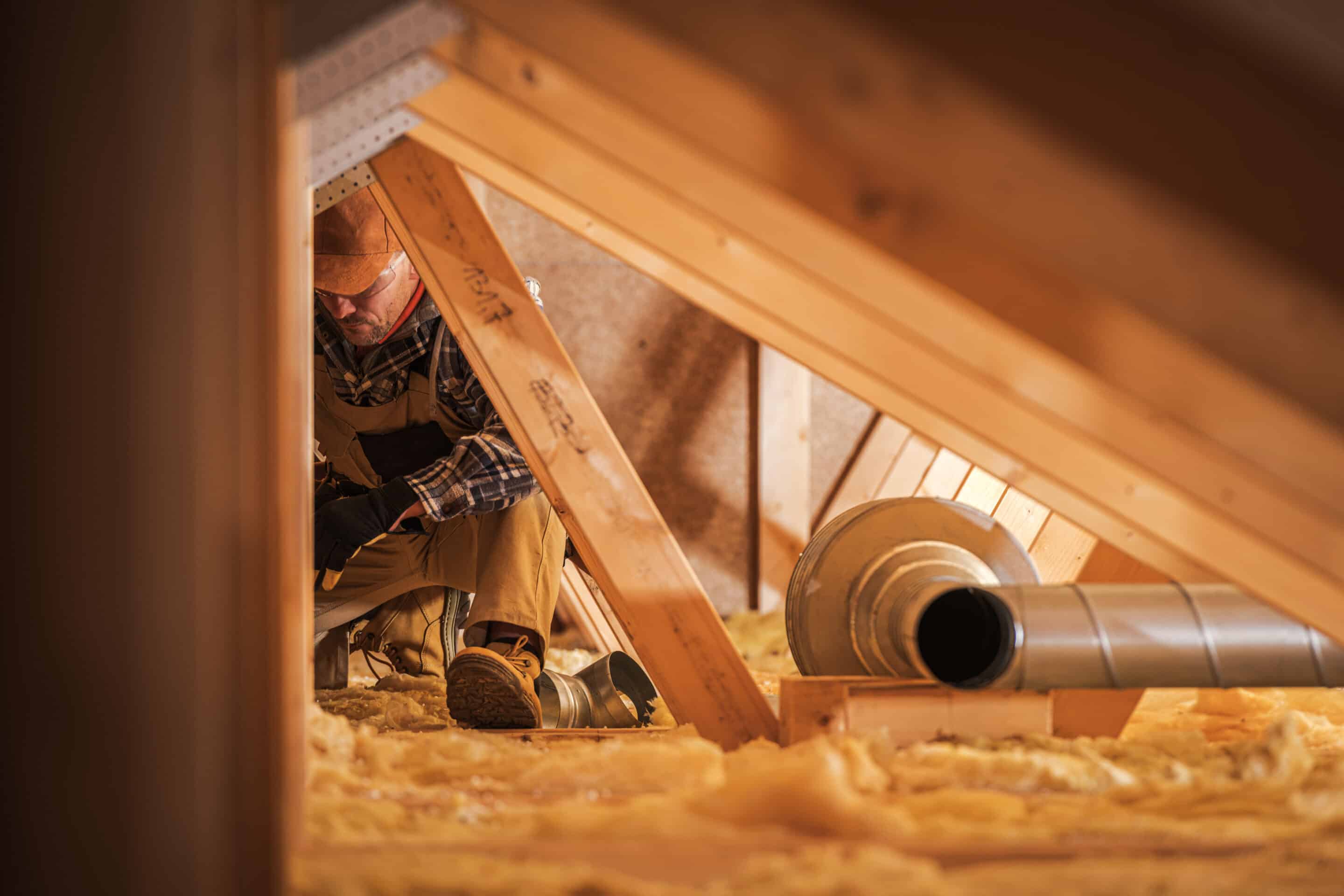Home>diy>Building & Construction>Why Is Soil Testing Important In Construction


Building & Construction
Why Is Soil Testing Important In Construction
Modified: December 7, 2023
Ensure a strong foundation for your building construction with soil testing. Discover why soil testing is crucial for construction projects to avoid potential risks and ensure long-term stability.
(Many of the links in this article redirect to a specific reviewed product. Your purchase of these products through affiliate links helps to generate commission for Storables.com, at no extra cost. Learn more)
Introduction
In the realm of construction, the importance of soil testing cannot be overstated. Soil serves as the foundation upon which buildings are erected, providing stability, strength, and support. Understanding the characteristics of the soil on a construction site is crucial in determining the appropriate construction techniques, materials, and design considerations.
Soil testing involves a comprehensive analysis of soil samples taken from the construction site. It helps construction professionals assess the soil’s composition, stability, bearing capacity, consolidation potential, settlement potential, contamination, and other subsurface conditions. By conducting proper soil tests, engineers and builders can make informed decisions that contribute to the overall safety, durability, and success of construction projects.
This article will delve into the importance of soil testing in construction and explore the various types of tests conducted. We will discuss how soil composition affects the stability and bearing capacity of the soil, as well as the potential for consolidation and settlement. Additionally, we will touch upon the significance of evaluating soil contamination and other subsurface conditions. Finally, we will outline some guidelines for conducting effective soil tests and highlight the role of soil testing in construction projects.
Whether you are a construction professional or a homeowner embarking on a building project, understanding the importance of soil testing can help you make informed decisions and ensure the longevity and safety of your structure. So let’s explore this fascinating world beneath our feet and discover why soil testing is a critical component of any construction endeavor.
Key Takeaways:
- Soil testing is crucial for construction, aiding in foundation design, risk assessment, cost optimization, and environmental considerations. Thorough testing ensures safety, quality, and compliance with regulations, benefiting both construction professionals and the environment.
- Understanding soil composition, stability, bearing capacity, consolidation, and settlement potential is essential for successful construction projects. Soil testing guides informed decision-making, enabling the design of structures compatible with diverse soil conditions, ensuring longevity and safety.
Read more: Why Construction Is Important
Importance of Soil Testing in Construction
Soil testing plays a vital role in construction projects and is essential for ensuring the stability, safety, and durability of buildings and infrastructure. Here are some key reasons why soil testing is of utmost importance in the construction industry:
- Foundation Design: The foundation is the backbone of any structure, and its stability is dependent on the properties of the underlying soil. Soil testing provides crucial information about the soil’s bearing capacity, which determines the load that the soil can safely support. This data enables engineers to design the appropriate foundation type, depth, and dimensions, ensuring the structural integrity of the building.
- Construction Techniques: Different soil types require different construction techniques. Soil testing identifies the soil’s composition, including its clay, silt, sand, and gravel content. This information helps construction professionals select appropriate construction methods, such as compaction levels, soil stabilization techniques, and drainage measures, to compensate for the soil’s characteristics.
- Risk Assessment: Soil testing helps identify potential risks and hazards associated with the construction site. For example, if the soil contains high levels of contaminants or is prone to liquefaction during earthquakes, additional precautions can be taken to mitigate these risks. By understanding the site’s subsurface conditions, construction professionals can implement appropriate engineering solutions to minimize potential issues.
- Cost Optimization: Soil testing aids in optimizing construction costs by providing accurate data on soil characteristics. This information helps determine the quantity and quality of materials required, preventing over or underestimation. Additionally, it allows for efficient planning of construction schedules, resource allocation, and site preparation, reducing unnecessary expenses and delays.
- Environmental Considerations: Soil testing helps in evaluating the environmental impact of construction projects. By identifying soil contamination levels, including pollutants or hazardous materials, appropriate remediation measures can be undertaken to ensure the safety of workers, nearby communities, and the surrounding environment. Soil testing also helps in complying with environmental regulations and permits.
In summary, conducting soil testing in construction projects is paramount to make informed decisions and mitigate potential risks. It assists in foundation design, determines appropriate construction techniques, assesses risk factors, optimizes costs, and ensures environmental sustainability. By investing in thorough soil testing, construction professionals can uphold the highest standards of safety, quality, and durability in their projects.
Types of Soil Tests
There are several types of soil tests conducted in construction projects to assess various characteristics of the soil. These tests provide valuable data that helps engineers and builders make informed decisions. Let’s explore some common types of soil tests:
- Particle Size Analysis: Particle size analysis, also known as grain size analysis, determines the distribution of different-sized particles in the soil. It helps classify the soil as clay, silt, sand, or gravel. This information is crucial for assessing the soil’s permeability, compaction characteristics, and its potential for erosion.
- Plasticity Index: The plasticity index test measures the plasticity and compressibility characteristics of fine-grained soils, such as clay. It helps determine the soil’s ability to withstand deformation under load and its potential for shrinkage and swelling.
- Compaction Test: Compaction tests evaluate the soil’s ability to be compacted to a desired density. This test is crucial in determining the compaction efforts required during construction and assessing the suitability of the soil for supporting structures. The most common compaction test is the Proctor test, which determines the maximum dry density and optimum moisture content of the soil.
- Bearing Capacity Test: Bearing capacity tests determine the load-bearing capacity of the soil, which is crucial in designing a stable foundation for structures. The most common bearing capacity test is the plate load test, where a known load is applied on a steel plate placed on the soil to measure the settlement and calculate the bearing capacity.
- Permeability Test: Permeability tests evaluate the soil’s ability to allow the flow of water. This test helps determine the drainage characteristics of soil and is crucial in designing foundations, retaining walls, and underground structures. The most common permeability test is the constant head or falling head test.
- California Bearing Ratio (CBR) Test: The CBR test evaluates the strength and load-bearing capacity of subgrade soils. It is commonly used in road construction projects to assess the suitability of the soil for supporting pavement layers.
- Shear Strength Test: Shear strength tests assess the soil’s resistance to deformation and its ability to withstand stresses. These tests help in evaluating slope stability, designing retaining walls, and assessing the soil’s behavior under different loading conditions.
These are just a few examples of the many soil tests available. The selection of specific tests depends on the project’s requirements, soil conditions, and the desired level of accuracy needed.
By conducting these soil tests, construction professionals gain valuable insights into the soil’s characteristics, enabling them to make informed decisions about foundation design, construction techniques, and risk assessment. It is important to consult with geotechnical engineers or soil testing experts to determine the appropriate tests for a specific construction project.
Understanding Soil Composition
Soil composition refers to the makeup and properties of the different components that make up the soil. It plays a crucial role in determining the soil’s behavior, stability, and suitability for construction purposes. Understanding soil composition is essential for engineers and builders to make informed decisions when designing and constructing buildings. Here are key aspects of soil composition:
- Mineral Particles: Soil consists primarily of mineral particles that are derived from weathering rocks and minerals. These particles can be classified into three main categories based on their size: clay, silt, and sand. Clay particles are the smallest, silt particles are intermediate in size, and sand particles are the largest. The proportions of these mineral particles in the soil determine its texture and affect its properties such as permeability, compaction, and stability.
- Organic Matter: Organic matter refers to the decomposed remains of plants, animals, and microorganisms present in the soil. It plays a crucial role in soil fertility, nutrient availability, water retention, and overall soil health. Soils with higher organic matter content tend to have better structure, moisture retention, and fertility. Organic matter also influences the soil’s ability to resist erosion and support plant growth.
- Air and Water: In addition to mineral particles and organic matter, soils contain air and water in the pore spaces between particles. The presence of air and water in the soil has a significant impact on its engineering properties. Adequate pore space for air and water is crucial for soil compaction, drainage, and root growth in plants. The ratio of air to water in the soil, known as the soil moisture content, affects its strength, shrinkage, and stability.
- pH Level: The pH level of the soil refers to its acidity or alkalinity. It influences the availability of nutrients to plants and can affect soil fertility. Different plants have specific pH requirements, so understanding the soil’s pH level is crucial for selecting suitable vegetation and implementing appropriate soil amendments if necessary.
- Soil Structure: Soil structure refers to the arrangement and organization of soil particles into aggregates or clumps. The structure is influenced by factors such as organic matter, mineral composition, compaction, and the presence of clay. A well-structured soil allows for better water penetration, root growth, and structural stability, while a poorly structured soil can lead to drainage problems, compaction, and reduced fertility.
- Soil Classification: Soils are classified based on their composition and properties. The Unified Soil Classification System (USCS) categorizes soils into different groups based on their particle size distribution and plasticity characteristics. This classification system helps engineers and geotechnical professionals understand and communicate the properties and behavior of different soil types.
Understanding the composition of the soil is crucial for construction professionals as it influences the selection of construction techniques, foundation design, and overall project success. Soil composition determines properties such as permeability, compaction characteristics, stability, and fertility. By conducting thorough soil tests and analyzing soil composition, engineers can make informed decisions and implement appropriate measures to ensure the stability, durability, and safety of construction projects.
Assessing Soil Stability and Bearing Capacity
Soil stability and bearing capacity are critical considerations in construction projects. Assessing these factors ensures that the soil can support the loads imposed by structures and remains stable throughout the project’s lifespan. Understanding how to evaluate soil stability and bearing capacity is crucial for engineers and builders. Let’s explore these concepts in more detail:
Soil Stability:
Soil stability refers to the ability of the soil to resist deformation or movement caused by external forces. It is essential to assess soil stability to ensure the safe and long-term performance of structures. Several factors influence soil stability, including soil type, moisture content, compaction, slope angle, and the presence of any weak or vulnerable layers.
Geotechnical engineers evaluate soil stability through various tests, including direct shear tests, triaxial shear tests, and slope stability analysis. These tests measure the soil’s shear strength, which is its resistance to sliding along a plane, and determine the stability of embankments, slopes, and foundations under different loading conditions.
Bearing Capacity:
Bearing capacity is the ability of the soil to support the load imposed by a structure without excessive settlement or failure. It is a critical parameter in designing foundations to distribute the structural load to the soil safely. Insufficient bearing capacity can lead to foundation settlement, structural damage, and even collapse.
There are various methods to assess the bearing capacity of soil, including plate load tests, static cone penetration tests, and standard penetration tests. These tests involve applying a load to the soil and measuring the resulting settlement or resistance. The data obtained from these tests helps engineers determine the appropriate foundation type and dimensions to ensure the adequate transfer of loads to the soil.
In addition to stability and bearing capacity assessments, engineers also consider factors such as foundation settlement, differential settlement, and lateral earth pressure when designing structures. Soil reinforcement techniques, such as soil nails, ground anchors, and geosynthetic materials, may be utilized to improve soil stability and bearing capacity.
It is important to note that soil stability and bearing capacity can vary significantly within a construction site. Therefore, site-specific soil investigations, including thorough soil testing and geotechnical analysis, are crucial to accurately assess these parameters. This allows engineers to design foundations and structures that are compatible with the soil conditions and minimize risks associated with soil instability and inadequate bearing capacity.
By thoroughly understanding and assessing soil stability and bearing capacity, construction professionals can ensure the safe and efficient design and construction of structures. It is advisable to consult with geotechnical engineers or soil testing experts to conduct the necessary assessments and obtain reliable data for making informed decisions in construction projects.
Tip: Soil testing is important in construction to assess the soil’s strength, composition, and suitability for building. It helps determine the type of foundation and necessary soil stabilization methods, ensuring the safety and stability of the structure.
Read more: Why Construction Safety Is Important
Determining Soil Consolidation and Settlement Potential
Soil consolidation and settlement potential are important considerations when planning and designing construction projects. Understanding these factors allows engineers and builders to anticipate and account for potential soil movement and settlement over time. Let’s explore the concepts of soil consolidation and settlement potential:
Soil Consolidation:
Soil consolidation is a process by which soil particles compress and rearrange under applied loads. When a structure is built on top of soil, the weight of the structure causes an increase in pressure, leading to soil compression. This compression can continue over time until the soil particles reach a state of equilibrium.
Consolidation testing is conducted to determine how much soil settlement is likely to occur over a given period. The results of consolidation tests help engineers assess the potential for long-term settlement and develop appropriate foundation designs and construction techniques to mitigate any adverse effects. Consolidation tests typically involve loading soil samples in a controlled manner and measuring the resulting settlements.
Settlement Potential:
Settlement potential refers to the expected vertical movement or settlement of the soil under the weight of a structure or other applied loads. Settlement can occur immediately after construction (immediate settlement) or continue over an extended period of time (consolidation settlement).
Several factors influence settlement potential, including soil type, moisture content, the compressibility of the soil, and the magnitude and distribution of the applied loads. Consolidation settlement is usually more significant for clayey soils, which have a higher degree of compressibility compared to sandy soils.
Geotechnical engineers use various methods to estimate settlement potential, including empirical calculations, field observations, and numerical modeling techniques. Settlement analyses take into account factors such as the characteristics of the soil layers, the magnitude and distribution of loadings, and the time frame over which settlement is expected.
Preventing Excessive Settlement:
To prevent excessive settlement and its potential adverse effects on structures, several measures can be taken. These include implementing appropriate foundation designs, preloading and surcharging the soil to expedite consolidation before construction, and selecting suitable construction techniques to minimize post-construction settlement.
Geotechnical investigations, including soil testing and analysis, are essential in determining the consolidation and settlement potential of the soil. By gathering reliable data on the soil’s characteristics and behavior, engineers can make informed decisions about foundation design, construction sequences, and load distribution to ensure the integrity and stability of structures over time.
It’s important to account for soil consolidation and settlement potential during the planning, design, and construction phases of a project. This proactive approach helps minimize any adverse effects of settlement on the performance and longevity of structures, ensuring their safety and functionality for years to come.
Evaluating Soil Contamination and Subsurface Conditions
Evaluating soil contamination and subsurface conditions is an essential part of construction projects, particularly when the site has a history of industrial activity or potential environmental hazards. Understanding the presence and extent of soil contamination and other subsurface conditions is crucial for ensuring the safety of workers, protecting the environment, and making informed decisions during construction. Let’s delve into this topic in more detail:
Soil Contamination:
Soil contamination refers to the presence of hazardous substances or pollutants in the soil. These contaminants can come from various sources, such as industrial activities, chemical spills, improper waste disposal, and previous land use. It is important to identify and assess soil contamination to mitigate potential health risks, prevent environmental damage, and comply with regulatory requirements.
Site investigations and soil testing are typically conducted to detect and evaluate soil contamination. These tests involve collecting soil samples at various depths and analyzing them for the presence of harmful substances, such as heavy metals, petroleum hydrocarbons, pesticides, or volatile organic compounds (VOCs). By identifying the type and concentration of contaminants, engineers and environmental specialists can develop remediation plans and implement appropriate measures to mitigate the risks associated with soil contamination.
Subsurface Conditions:
Understanding subsurface conditions is crucial for construction projects as it helps assess the stability, load-bearing capacity, and overall suitability of the soil. Subsurface conditions can impact the construction processes, foundation design, and the long-term performance of structures. Factors such as soil composition, groundwater levels, and the presence of bedrock or soft ground layers play a significant role in determining the subsurface conditions.
Geotechnical investigations, including soil borings, geophysical surveys, and groundwater monitoring, are conducted to assess subsurface conditions. Soil samples are collected at different depths and analyzed to determine properties such as shear strength, compressibility, and permeability. This information helps engineers and designers make informed decisions about foundation designs, excavation methods, soil stabilization techniques, and groundwater management.
Environmental Impact Assessments:
In some cases, construction projects may require environmental impact assessments (EIAs) to evaluate the potential impact on the environment caused by soil contamination or other subsurface conditions. EIAs provide a comprehensive analysis of environmental risks and propose mitigation measures to minimize adverse effects on ecosystems, water resources, and surrounding communities.
Environmental specialists and consulting firms typically conduct EIAs, which involve site investigations, monitoring, and risk assessments. These assessments help identify potential hazards, develop appropriate mitigation plans, and ensure compliance with environmental regulations and standards.
By evaluating soil contamination and subsurface conditions, construction professionals can effectively manage environmental risks, ensure worker safety, and design structures that are compatible with the site’s characteristics. It is essential to involve qualified environmental specialists and geotechnical engineers during the planning and design phases to conduct thorough site investigations and implement appropriate remediation measures, if required.
Overall, evaluating soil contamination and subsurface conditions is a critical component of any construction project, enabling a comprehensive understanding of the site’s environmental and geotechnical characteristics and facilitating the development of strategies to ensure safe and sustainable construction practices.
Guidelines for Conducting Soil Tests
Conducting soil tests is a crucial step in the construction process to gather essential data about the soil’s properties and behavior. These tests provide valuable insights that aid in making informed decisions regarding foundation design, construction techniques, and overall project success. Here are some general guidelines to follow when conducting soil tests:
- Site Investigation: Before conducting soil tests, perform a thorough site investigation to gather information about the construction site’s geology, topography, and potential environmental hazards. This helps in selecting appropriate locations for soil sampling and determining the types of tests required.
- Sample Collection: Collect soil samples at various depths and representative locations across the construction site. Use proper sampling techniques, such as hand auguring or drilling, to obtain undisturbed samples. Ensure that samples are collected from different soil layers and include both disturbed and undisturbed samples, as they provide different information about the soil’s properties.
- Laboratory Testing: Send the collected soil samples to a reputable laboratory for analysis. Provide clear instructions to the laboratory regarding the specific tests to be conducted, including particle size analysis, compaction tests, bearing capacity tests, and any additional tests tailored to the project’s needs.
- Data Interpretation: Once the laboratory testing is complete, carefully review and interpret the test results. Seek the expertise of geotechnical engineers or soil specialists to ensure accurate interpretation of the data. Look for key parameters such as soil classifications, compaction characteristics, shear strength, permeability, settlement potential, and any indications of contamination if applicable.
- Documentation and Reporting: Document all relevant information regarding the soil tests, including the location of sample collection, test methods used, laboratory results, and interpretations. Compile this information into a comprehensive report that can be referenced throughout the construction project. Maintain clear communication with the project team, including architects, engineers, and contractors, to ensure everyone is informed of the soil test findings.
- Continual Monitoring: Soil conditions can change over time, so it is important to monitor the soil during the construction process. Regularly assess soil moisture content, compaction levels, and any indicators of settlement or other changes. This ongoing monitoring ensures that any deviations from the original data are promptly addressed, minimizing potential risks or issues during construction.
- Compliance with Standards and Regulations: Follow local, national, and international standards and regulations related to soil testing. This includes adherence to testing methods, safety guidelines, and environmental protocols. Compliance ensures that the soil testing process is reliable, consistent, and in line with industry best practices.
By following these guidelines, construction professionals can ensure that soil tests are conducted accurately and provide reliable data. This data is instrumental in making informed decisions, mitigating risks, and designing structures that are compatible with the soil conditions. With thorough soil testing, construction projects can proceed with confidence, knowing that the foundation and overall construction are based on a comprehensive understanding of the site’s soil characteristics.
Role of Soil Testing in Construction Projects
Soil testing plays a crucial role in construction projects, providing valuable insights into the soil’s properties, behavior, and suitability for various construction activities. The role of soil testing encompasses several key aspects throughout the different stages of a construction project:
Foundation Design:
Soil testing is fundamental in designing appropriate foundations for structures. By assessing the soil’s bearing capacity, engineers can determine the type of foundation required, whether it be shallow foundations like spread footings or deep foundations such as pile foundations. Understanding the soil’s strength, compressibility, and shear characteristics, as obtained through soil testing, allows engineers to design foundations that safely distribute loads into the underlying soil.
Construction Techniques:
Soil testing provides valuable information for selecting the appropriate construction techniques. Different soil types require different approaches for excavation, compaction, soil stabilization, and drainage. By understanding the soil’s composition and compaction characteristics, construction professionals can select the most suitable methods and equipment, ensuring optimal compaction and stability during construction.
Risk Assessment and Mitigation:
Soil testing helps identify potential risks and hazards associated with the construction site. By evaluating soil characteristics, such as contamination levels and geotechnical properties, engineers can assess potential environmental risks and implement appropriate remediation measures. Additionally, soil testing enables the identification of potentially unstable or problematic soil conditions, allowing for the implementation of engineering solutions to mitigate risks such as slope stability issues or settlement problems.
Material Selection and Quantity Estimation:
Soil testing facilitates accurate material selection and quantity estimation. By determining the soil’s properties, including particle size distribution, permeability, and compaction characteristics, engineers can select suitable construction materials, such as aggregates or geosynthetic materials, that work harmoniously with the soil. Additionally, soil testing helps estimate the required quantities of materials, preventing excess or insufficient material usage, optimizing costs, and reducing waste.
Quality Control and Assurance:
Soil testing serves as a vital component of quality control and assurance during construction. Regular testing and monitoring of the soil’s properties and compaction levels ensure that construction activities are in accordance with project specifications and industry standards. It helps identify any deviations or issues early on, allowing for timely adjustments and corrective measures to maintain the desired quality and integrity of the construction work.
Post-Construction Evaluation:
Soil testing continues to be valuable even after construction completion. Post-construction soil testing helps assess the performance and long-term stability of the structure by monitoring settlement, performance of the foundation, and any changes in soil characteristics over time. This information aids in evaluating the effectiveness of the construction techniques and provides insights for future projects.
In summary, soil testing is an integral part of construction projects, providing critical insights that inform foundation design, construction techniques, risk assessment, material selection, quality control, and post-construction evaluation. By conducting thorough soil testing, construction professionals can make informed decisions and implement appropriate measures to ensure the stability, durability, and safety of structures in diverse soil conditions. It is essential to engage experienced geotechnical engineers and soil testing experts to perform reliable and accurate soil testing to achieve successful construction outcomes.
Conclusion
Soil testing is an indispensable component of construction projects, playing a pivotal role in determining the stability, safety, and durability of structures. Through thorough analysis of soil samples, engineers and builders gain valuable insights into the soil’s composition, stability, bearing capacity, consolidation potential, settlement potential, and contamination levels. This information serves as the foundation for informed decision-making throughout the various stages of a construction project.
By understanding the soil’s characteristics, construction professionals can design appropriate foundations, select suitable construction techniques, and assess potential risks and hazards. Soil testing allows for the optimization of material selection and quantity estimation, ensuring cost-effectiveness and minimizing waste. Furthermore, it ensures compliance with environmental regulations and permits, protecting both workers and the surrounding environment.
The guidelines for conducting soil tests, such as conducting thorough site investigations, proper sample collection, laboratory testing, accurate data interpretation, documentation, and compliance with standards, provide a framework for reliable and consistent soil testing practices. Ongoing monitoring of soil conditions during construction and post-construction evaluation further enhance the effectiveness and accuracy of soil testing efforts.
By implementing robust soil testing protocols and involving geotechnical engineers and soil testing experts, construction professionals can mitigate risks, optimize construction techniques, and enhance the overall success of their projects. Understanding the soil’s behavior and characteristics enables the design and construction of structures that are compatible with the site’s unique conditions, ensuring their stability, longevity, and safety.
Soil testing is not just a technicality; it is an investment in the foundation of a construction project. By taking the time and effort to perform thorough soil testing, construction professionals demonstrate their commitment to quality, safety, and sustainability. With proper soil testing, construction projects can proceed with confidence, knowing that the integrity of the structures is based on a comprehensive understanding of the soil beneath their feet.
Frequently Asked Questions about Why Is Soil Testing Important In Construction
Was this page helpful?
At Storables.com, we guarantee accurate and reliable information. Our content, validated by Expert Board Contributors, is crafted following stringent Editorial Policies. We're committed to providing you with well-researched, expert-backed insights for all your informational needs.














0 thoughts on “Why Is Soil Testing Important In Construction”